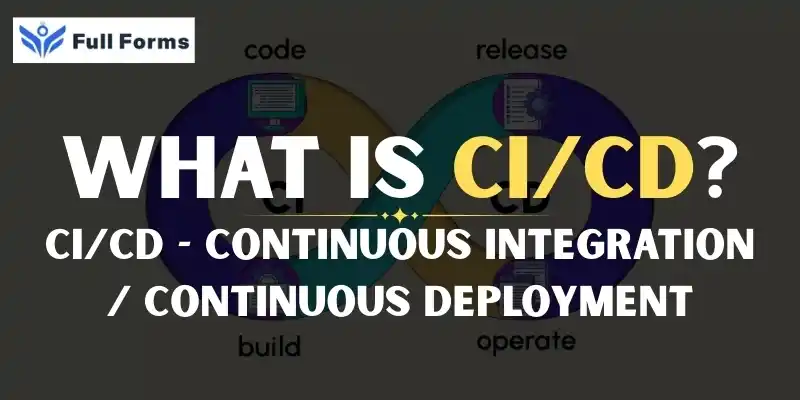Continuous Integration / Continuous Deployment
(CI/CD)

Description
Your Guide to Continuous Integration and Deployment (CI/CD)
In the modern world, changes must be delivered fast, with no harm to software’s overall operation. This is the point that Continuous Integration and Continuous Deployment cover, in helping software teams to work properly, catch glitches ahead of time, and provide their end-users with the most functional products. Let us go through what CI/CD is, how it functions, and why it is so relevant.
CI or continuous Integration
CI or continuous Integration generally allows for the unity of many software team members working in a single project. Formerly, developers would wait for weeks or even months to let their changes mix with everyone else’s work, leading frequently to marriage of big issues and problems, and nothing works rightly termed ‘integration hell.’
With Continuous Integration, everyone in the team adds their changes to a shared codebase very often, sometimes several times a day. Every new piece of code that somebody puts in is cross-referenced instantly with automatic tools that ascertain nothing is amiss. This includes execution of tests, error checks, and confirmation that it jibes with what’s already there.
Here’s a simple example of how CI might look for a software team: A developer writes new code for a feature or fixes a bug. The developer saves their changes to the shared codebase, usually on a platform like GitHub or GitLab. As soon as the code is added, an automated system tries to “build” the project, checking that everything fits together.
Automated Tests: Running tests in order to ensure that the new changes do not break anything. Feedback: If any problems are found, then a message will get to the developer right away so that he can fix the issue then and there, easily.
Hence, Continuous Integration helps in early detection of problems, eliminates surprises, and maintains software in always good condition.
What is Continuous Deployment?
Continuous Deployment goes one step further. When the code clears all automated tests and inspections, CD automatically ships the new Variant to the users. Thus, every change, however small, gets live without waiting for anyone to release it manually.
You’ll sometimes hear the term “Continuous Delivery” too. The distinction is small: Continuous Delivery means the code is always ready to be released, but a person may still have to push the final button. Continuous Deployment means the release happens automatically.
What Does Continuous Deployment Do?
Let us see what CD automation involves:
Once tests are checked, the code enters a release process, which may extend to further testing and security updating and fine-tuning before the launch. Automatic Deployment: In case all things are fine, the system then automatically deploys an updated application or website to users. Monitoring: This includes monitoring for new versions with early detection in case something goes wrong, with which it automatically reverts back to the former version.
Why Do CI/CD Matter?
Continuous Integration/ Continuous Deployment have become a necessity in modern software development for several reasons. The Software Development process is a competitive world where time to market is the expectation, not time to wait. This means that a development team must be able to launch new features and bug fixes quickly and often. Quality – Automated tests catch mistakes early, creating more reliable software. Continuous deployment also automates the deployment process. Risk – By making small, frequent updates, there’s less chance of big problems slipping through. Collaboration – Developers can work together without stepping on each other’s toes because changes created by one developer are separated from changes created by another developer. Users – New features and improvements go to customers quickly. This makes customers happy.
Who Uses CI/CD?
CI/CD can be implemented into small startup companies as well as colossal tech giants. Any team that develops software, whether it be a website, an application, or a system, finds incredible value in using CI/CD, particularly if one’s business is required to be highly responsive to customer needs or security concerns.
Popular CI/CD Tools
There are several such tools helping teams in setting up these pipelines; some of the most popular ones are:
- Jenkins: The most popular open-source automation server.
- GitHub Actions: Built-in automation workflows – great for GitHub.
- GitLab CI/CD: Complete source system for integration and deployment of code.
- CircleCI, Travis CI, Azure DevOps, Bitbucket Pipelines: Some other good popular choices serving different purposes
Challenges and Things to Consider
However, setting up CI/CD is not an easy process, and here’s what teams need to do:
- Write really good automated tests that catch almost every problem.
- Feel that deployments are safe and secure.
- Train everyone to use the new systems and processes.
You can tackle these challenges with some good planning and the right tools. The effort pays off in the end.
Conclusion
Software construction, and delivery are changed by the automation of testing and continuous automated release. This way, teams are able to respond faster to users’ needs and wants since they create better software by combining often tested code and frequently releasing updates.
You could be working in a large tech company or working on your app; whatever the case may be, knowing CI/CD will enable you to work smartly for better results.
